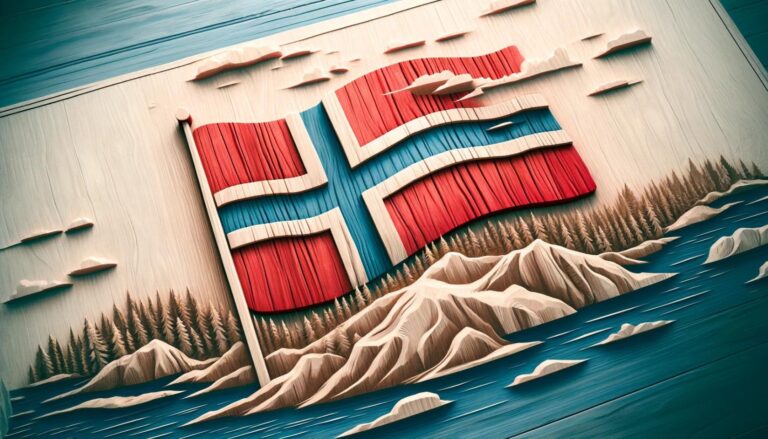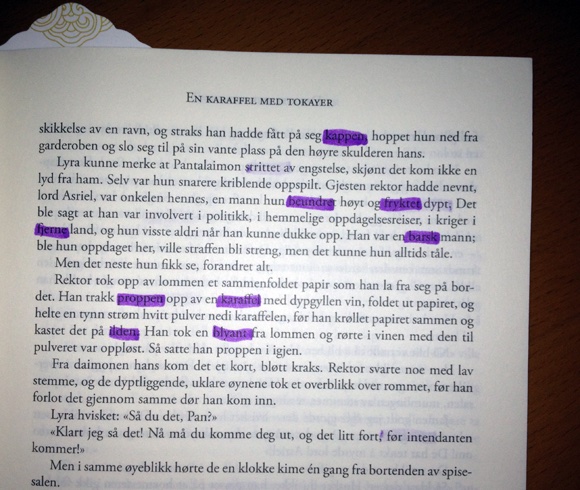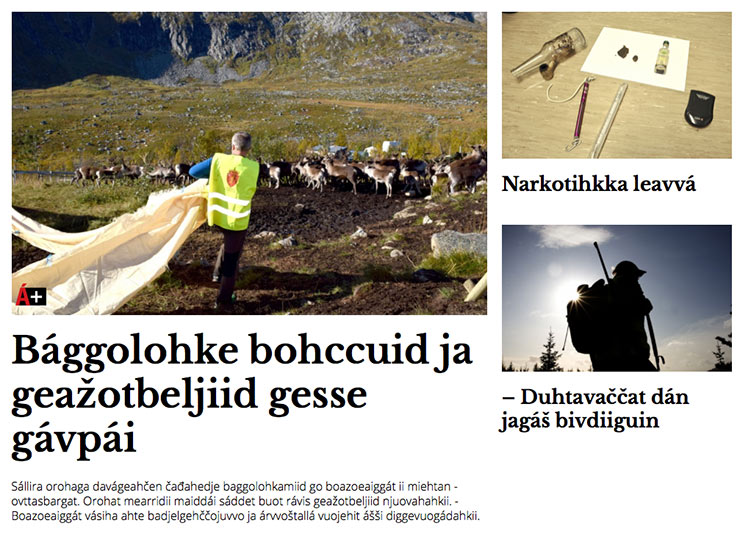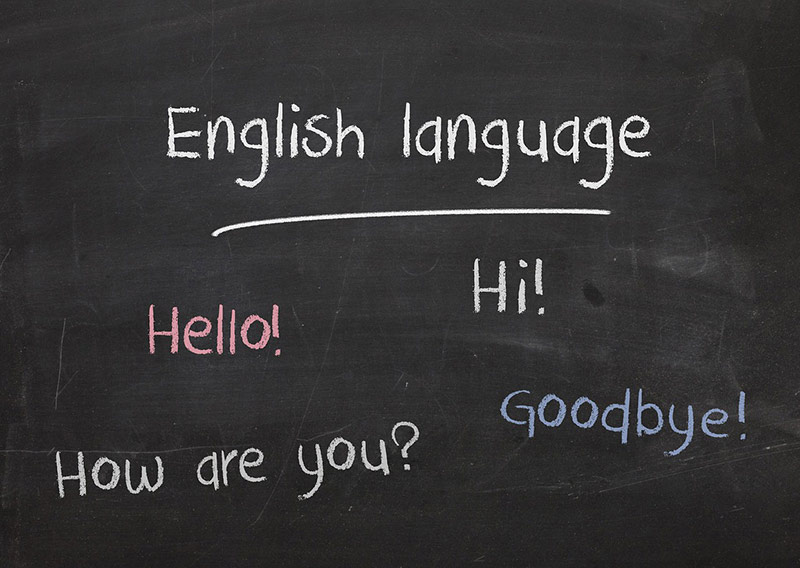From Bokmål and Nynorsk to Sami and English, Norway is home to more languages than you might expect. Here’s what you need to know before you visit or move.
Norway may be a small country by population, but its linguistic landscape is surprisingly diverse. While most people associate the country with the Norwegian language, the reality is more layered than that.

There are two official written forms of Norwegian, each with its own history and regional use. Add to that a wide range of spoken dialects, some of which are so distinct they can be hard for Norwegians from other regions to follow.
Then there are the Indigenous Sami languages, the heritage language of Kven, and a growing number of people who speak immigrant languages at home. And, of course, there’s English, which plays a significant role in education, business, and daily life.
Understanding this mix of languages helps explain how communication works in modern Norway, both formally, in schools and government, and informally, on the street or in the workplace.
If you plan to live, work, or even just travel here, getting to grips with how language functions in Norway can make a big difference to your experience.
In this guide, we’ll explore the origins and development of Norwegian, take a look at how the two written forms differ, and introduce the other languages you may hear in different parts of the country.
Whether you’re planning to learn the Norwegian language or just want to understand what’s going on around you, this is a good place to start.
What Languages Do Norwegians Speak?
The short answer is Norwegian, but even that needs some explanation. Norwegian is the official language of Norway, and it exists in two written forms: Bokmål and Nynorsk. Both are used in schools, public administration, and media.
Learn Norwegian Now: Norwegian Class 101 / The Mystery of Nils
Most Norwegians write in Bokmål, while Nynorsk is more common in certain parts of western and central Norway. All schoolchildren learn to read and understand both, regardless of which form is used in their region.
When it comes to spoken language, things become even more varied. Norway has no single standard spoken Norwegian. Instead, regional dialects dominate everyday conversation, and they can differ significantly from one part of the country to another.
This variety is something Norwegians are proud of, and people tend to continue speaking their local dialect throughout life, regardless of where they move or work.
In addition to Norwegian, English is widely spoken across Norway. Children start learning it from around the age of eight, though exposure through media often begins much earlier.
By their teenage years, most Norwegians are fluent English speakers. English is not only used socially but also increasingly in the workplace, particularly in science, technology, and international business settings.
Many Norwegians also speak a third language, often learned at school. German and Spanish are the most popular options, although French is also offered in some schools. In general, Norwegians are strong language learners and tend to have a positive attitude toward multilingualism.
Finally, minority languages such as Sami and Kven are spoken in certain regions, particularly in the north. These languages have official recognition and are an important part of Norway’s cultural landscape, though they are used by a relatively small portion of the population.
So while “Norwegian” might be the expected answer, the real picture is far more diverse, and much more interesting.
Historical Development of Norwegian
To understand the modern Norwegian language, it helps to look back at how it evolved. Like many languages, Norwegian is the product of centuries of political shifts, cultural exchanges, and gradual changes in grammar and pronunciation. It all begins with the language of the Vikings.
Old Norse: Norway's Linguistic Ancestor
The earliest form of the language spoken in what is now Norway was Old Norse. This was the common tongue of the Viking Age, used throughout Scandinavia and in Viking settlements across the North Atlantic and British Isles.

Old Norse formed the basis for all the modern North Germanic languages, including Norwegian, Danish, Swedish, Icelandic, and Faroese. While the language is no longer spoken, its influence is still felt in Norwegian vocabulary, grammar, and even place names.
Old Norwegian and the Impact of the Black Death
Over time, Old Norse developed into Old Norwegian, a localised variant used throughout the country during the Middle Ages. It was very similar to Old Icelandic but had its own regional traits.
Like many languages of the period, Old Norwegian was never standardised and included a wide range of local dialects.
In the 14th century, the Black Death swept through Norway, killing much of the population and triggering profound social and cultural upheaval. As the population shrank and communities became more isolated, the language changed too.
Grammar was simplified, vocabulary was lost or reshaped, and the overall structure of the language began to shift. This transitional period is known as Middle Norwegian.
The Danish Influence
From the late 1300s until 1814, Norway was ruled from Copenhagen, and Danish became the dominant written language in administration, literature, and education.
While people in Norway continued speaking Norwegian dialects in daily life, the written language became increasingly Danish. This had a lasting influence on the development of modern Norwegian, particularly on the form we now know as Bokmål.
Norwegian Bokmål
When people refer to the Norwegian language today, they are usually talking about Bokmål, which translates to “book language.” It is the most commonly used written form of Norwegian and is understood by virtually everyone in the country.
Bokmål has its roots in written Danish, which was used in Norway during centuries of political union with Denmark. After Norway gained independence in the early 19th century, Danish remained the dominant written language for some time.

Gradually, reforms were introduced to bring the language closer to Norwegian speech. These changes resulted in what we now know as Bokmål.
Today, around 80 to 90 percent of Norwegians use Bokmål as their primary written language. It is the default language in most schools, newspapers, businesses, and most public offices.
If you are learning Norwegian as a second language, Bokmål is the version you are most likely to encounter in textbooks, courses, and apps.
Bokmål continues to evolve, and not everyone agrees on the best spelling and grammar. Some people still prefer a slightly more conservative version known as Riksmål, which more closely resembles older Danish-influenced Norwegian.
Norwegian Nynorsk
The other written standard for the language is known as Nynorsk, or ‘new Norwegian'. Its history is complex, but despite the name it is meant to better reflect the Old/Middle Norwegian language used before the union with Denmark.
Although used as the primary language is many municipalities and schools, these are largely rural and so only around 12-15% of the population use Nynorsk as their primary form.
However, Nynorsk is a mandatory subject for schoolchildren in Norway, so the understanding of the alternative spellings is high.
Nynorsk is also regularly seen on the website of the state broadcaster, NRK, whose journalists are free to use either form.
Dialects of Spoken Norwegian
While Bokmål and Nynorsk are official written forms of Norwegian, there is no single standard for how the language is spoken. Instead, Norway is home to a wide variety of regional dialects, and these play a central role in everyday communication.
Unlike many countries where people tend to adopt a standardised national accent, Norwegians typically speak their local dialect throughout their lives.
Dialects vary in pronunciation, vocabulary, and even grammar, and the differences between them can be significant. Even to the point where two Norwegians may struggle to understand each other at first.
Because of this diversity, spoken Norwegian often sounds quite different from what learners see in textbooks. Most Norwegian language courses for foreigners focus on the Oslo dialect, also known as Eastern Norwegian.
It is commonly heard in the media and in larger cities, which has given it the reputation of being an unofficial standard.
A more recent feature of the linguistic landscape is kebabnorsk, a slang-heavy urban dialect that blends Norwegian with elements of Arabic, Turkish, Urdu, and other immigrant languages.
It originated in multicultural neighbourhoods in Oslo and reflects the city’s increasingly diverse population. While it’s not formal or widely understood outside the capital, it’s an interesting example of how language continues to evolve in modern Norway.
Sami
The Sami language – or more accurately group of languages – is spoken natively by less than 50,000 in Norway. It has official minority language status.
Since the Sami Act and the creation of the Sami Parliament in 1989, the language has seen a renewed focus with governmental support and grants available to writers and other creatives actively using the language. Whether this results in increased native use remains to be seen.

One of the issues is that there are ten variants of Sami, some of which are notably different. All of them have one thing in common though. They are wildly different from Norwegian!
Sami has its roots in the Uralic language family (of which Hungarian and Finnish are the best known) so they are impossible for native Scandinavian language speakers to understand.
I don't know how close Sami is to Finnish, so if there are any Finnish readers out there, please drop me a note and let me know!
Kven
But wait, we're not finished yet! The Kven language is spoken by the Kven people, a minority group in northern Norway with strong Finnish heritage.
The language is said to be spoken by as few as 10,000 people, the majority of which are of retired age, so there is a big risk of it dying out in the coming years.
The language is essentially a strong dialect of Finnish. Two notable features are the high number of Norwegian loan words and the use of Finnish words that are no longer used in Finland.
This reminds me of some Norwegian Americans that use phrasing and terms that are no longer used in modern Norway.
The English Language in Norway
It would be wrong of me to publish an article about what languages are spoken in Norway without mentioning the obvious elephant in the room: English!
English is taught from the third year of school, which is basically from the age of 8 onwards although some ‘fun' games involving counting, colours and so on could've started a year or two earlier.
Nevertheless, it's common for kids to already have a decent grasp on the language by the age of 8 because of YouTube, Netflix and the like!

By the time they reach the teenage years, the vast majority of Norwegians are fluent in English, and that ability sustains itself throughout adult life with the exposure to English language culture on TV, film and online.
English is also increasingly becoming the business language of Norway. Of course this isn't true for all sectors, but in science and engineering, many offices operate on an English-first policy.
What Languages of Norway Should You Learn?
If you’re planning to move to Norway, learning the language is one of the most important steps you can take. It’s essential for everyday life, building relationships, and accessing work and education.
For anyone hoping to stay long term, it’s also a requirement. Most applicants for permanent residency or citizenship must pass official Norwegian language exams, especially to prove spoken communication skills.
Learn Norwegian Now: Norwegian Class 101 / The Mystery of Nils
But what kind of Norwegian should you learn? For the vast majority of learners, Bokmål is the best starting point.
It’s used by most of the population, and nearly all Norwegian language courses and learning resources are based on Bokmål. If you're studying Norwegian from abroad or planning to live in Oslo or other larger cities, Bokmål will serve you well.
If you’re moving to western Norway, especially to smaller towns or rural areas, you may encounter Nynorsk as the main written form. In these regions, schoolbooks, signage, and local government documents may be written in Nynorsk.
While this might seem intimidating, all Norwegians are taught to understand both forms in school, and most are used to switching between them.
If you're interested in mastering both forms, a good approach is to start with Bokmål and then learn to read and write Nynorsk once you’re comfortable with the basics. Understanding both will give you a deeper appreciation of the language and culture. After all, it’s something Norwegians themselves are expected to do.
Did you realise there were so many language variants used in Norway? Why not share your discovery on Pinterest? We've got the perfect pin for that. Just hit those social sharing buttons to get started.


I think one of the most interesting and overlooked historical change is in the “th” sound. In Icelandic (much closer to Old Norse than Norwegian now) there are two versions of this sound; voiced and voiceless. They even have their own special characters:(Ð ð for the voiced version and Þ þ for unvoiced– these examples show upper case first and then lower case. But in Norwegian now this sound is totally gone and a simple “t” is used instead. It makes me wonder if the name “Thor” (which sounds like a typical Norwegian name to me) is still in use in Norway and how it is now pronounced.
Tor (without the h) is most common.
The name Thor is very common to me.
However, ‘th’ is always pronounced as ‘t’.
My wife is Thorgun her father was Thor.
However, many variants such as Torbjørn are spelt with a ‘t’.
Riksmål is actually an old, conservative variant of bokmål, more similar to Danish.
Ikke glem norsk tegnspråk! Norwegian Sign Language is a language with grammar and lexicon distinct from other sign languages in the world and is used by roughly 15,000 people. Norway is on the process of making norsk tegnspråk one of the county’s official languages.
What an excellent post! My grandmother and grandfather were both born in Bolga Helgeland, above the Artic Circle on a tiny island. When they immigrated to Minnesota, my grandfather, Jacob Christian Nelson, was so proud to be an American that he forbade his family from speaking Norwegian which I am trying to learn now. I think I grew up listening to the Riksmal dialect? Sounds like I should be learning the Boksmal?
I had 8 very enjoyable years working off-shore in the Norge oil industry where English was the everyday language so it was only during work breaks that I heard Norwegian spoke.
Whenever there were Finnish workers there was always robust joking about their languages and customs.
This was over 17 years ago so only good memories remain and very little of the language. Takk.
Jeg har lært meg bokmål selv. Lesing og skriving er også veldig bra. Jeg har bare problemer med å snakke, jeg har bare ikke muligheten til å øve. Derfor er jeg så glad for at så mange av mine norske venner snakker tysk.
How close is Danish to the Norwegian language, i.e., could someone learning Danish, to intermediate level perhaps, converse well in Norwegian?
Written Danish is almost identical to written Bokmål, with some spelling differences. Pronunciation however could not be more different. Danes speak with a hot potato in their throat 😀
Norwegian and Danish look very similar, so with a little practice and reading you will easily be able to understand written Norwegian. Speaking is another matter! They are pronounced so differently that it can be hard for a foreign speaker of one to understand the other completely (native speakers are more used to hearing the other language spoken and can usually manage to decipher 80-100%).
Swedish and Norwegian, on the other hand, look quite different but sound more similar. Norwegian is a good language to learn, therefore, if you want to gain access to all three mainland Scandinavian languages. It is also an entry point into Icelandic and Faroese, though not without considerable further study. They are closer to Old Norse, the language the Vikings spoke!
Great post! My folks still speak Old Norsk (90 years young and going strong) – as a young child listening to my family speak their native tongue, I heard songs. The language always sounded like they were singing.
Perhaps you could record their conversations for future generations?
I’m sure it would be greatly appreciated and I know I, for one, would love to hear them for sure.
I am a 7-grade-girl who lives in Norway, and we started learning English in the first year of school.
That’s the most common now, but before we learned English later😊
You forgot to tell about the travelers Romani Rakripa. In Norway maybe as few as 100 are able to talk it.